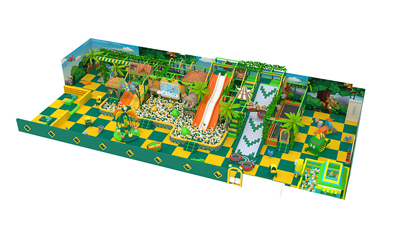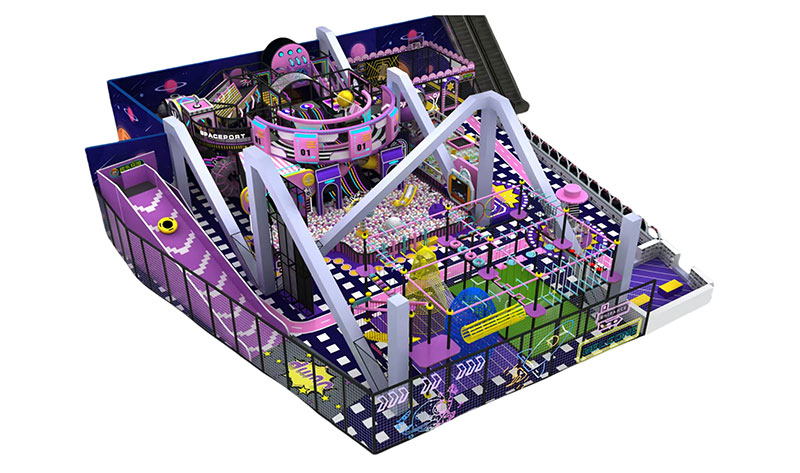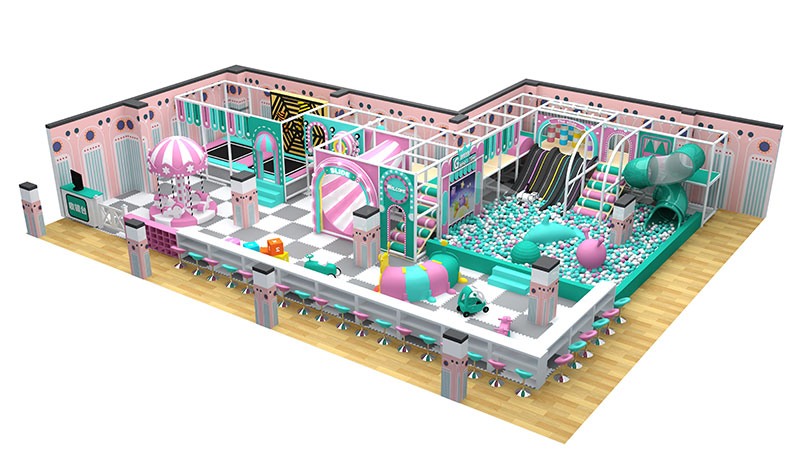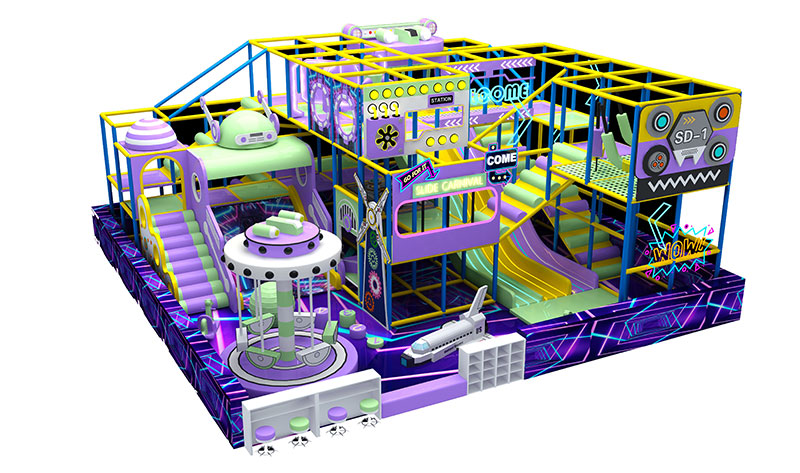Whether it’s a small trampoline for home use or a trampoline in a commercial setting like a trampoline park, trampolines are a great way to stay active and have fun. However, not all trampolines are created equal – there are significant differences between indoor and outdoor trampolines in design, materials, and purpose. Understanding these differences is crucial, especially if you’re considering buying a personal trampoline or investing in commercial trampoline equipment for your business.
1. Construction and Durability
Outdoor Trampolines
Designed to withstand harsh weather conditions (rain, UV rays, wind).
Often made with a galvanized steel frame to prevent rust.
UV-protected jumping mats to avoid sun damage.
Stronger springs or flexible bungee cords for better bouncing.
Indoor Trampolines
Designed for a controlled environment, so no weatherproofing is required.
Typically lighter weight, as they don’t require heavy materials.
Often used in trampoline parks, while *commercial trampoline equipment* must meet strict safety standards.
2. Safety Features
Outdoor Trampolines
Often have safety nets to prevent falls.
Anchored to the ground to prevent toppling in strong winds.
Padded frame to minimize risk of injury.
Indoor Trampolines
Typically wall-to-wall trampolines with padded guardrails.
Designed with reinforced stitching and high-tension springs for frequent use.
Must meet ASTM safety standards for commercial trampoline equipment.
3. Purpose and Performance
Outdoor Trampolines
Best for family recreation, fitness, or backyard fun.
Larger sizes (up to 15+ feet in diameter) for higher bounces.
Indoor Trampolines
Optimized for structured activities like dodgeball, fitness classes, or freestyle jumping.
In trampoline parks, trampolines are often connected to each other to create one large, continuous jumping surface.

4. Maintenance Requirements
Outdoor Trampolines
Require regular cleaning to remove dirt, leaves, and moisture.
The springs and frame need to be lubricated occasionally.
Indoor trampolines
Easier to maintain as they are protected.
At trampoline parks, professional inspections ensure that commercial trampoline equipment is kept in top condition.
Conclusion: Which should you choose?
Indoor trampolines are made of lighter materials and are suitable for controlled environments, while outdoor trampolines feature rust-resistant frames and UV-resistant mats to protect against the weather.












